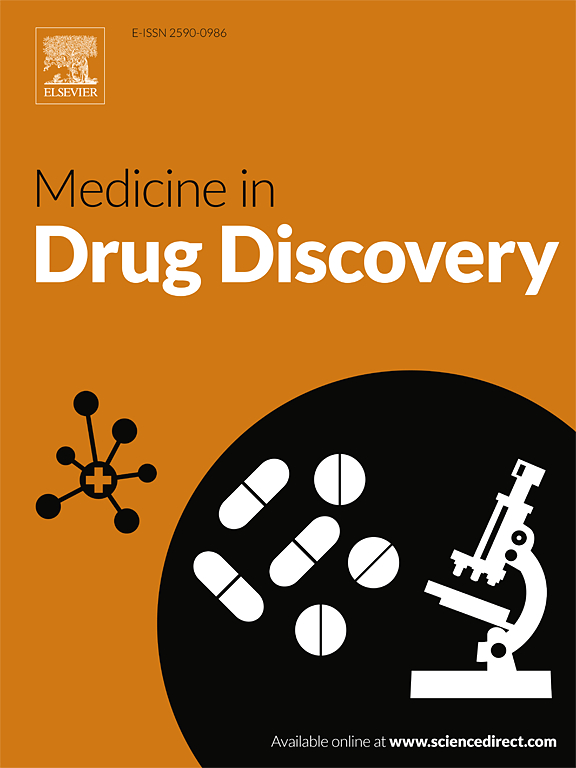新型吲哚类合成分子在癌症治疗中的应用:合成策略和构效关系
Q2 Medicine
引用次数: 0
摘要
吲哚是一种天然存在的含氮双环杂环体系,由苯和吡咯环融合而成。它已被证明具有多种生物活性。吲哚支架调节了许多在癌症发展中起重要作用的蛋白质和基因。美国食品和药物管理局(FDA)批准了结构中含有吲哚环的抗癌药物,包括阿勒替尼、舒尼替尼、奥西替尼、安洛替尼和帕obinostat。一些研究集中于开发新的吲哚衍生物来治疗癌症。各种研究表明吲哚C-3原子;C-3和C-2之间的π键;氮原子可以被多种其他结构片段取代,以克服耐药和毒性问题。各种吲哚衍生物的抗癌潜力,它们的合成策略和构效关系(SAR)对抗癌治疗的进一步发展和进步。文章还总结了不同的蛋白质如TRK、VEGFR、EGFR、CDKs、ERK、BRD4、基因如Bcl2、细胞内通路如PI3K/AKT/mTOR、酶如微管蛋白和拓扑异构酶II是如何被吲哚衍生物抑制的。合成策略和SAR将帮助药物化学家设计和开发有效的吲哚衍生物作为抗癌药物。本文章由计算机程序翻译,如有差异,请以英文原文为准。

Novel indole-based synthetic molecules in cancer treatment: Synthetic strategies and structure-activity relationship
Indole is one of the naturally occurring nitrogen-containing bicyclic heterocyclic ring systems where benzene and pyrrole rings are fused. It has been demonstrated to exhibit versatile biological activities. The indole scaffold regulates many proteins and genes which play a significant role in cancer development. US Food and Drug Administration (FDA) approved anti-cancer drugs having indole rings in their structure including alectinib, sunitinib, osimertinib, anlotinib, and panobinostat. Several research studies have focused on developing new indole derivatives for the treatment of cancer. Various studies have shown that indole C-3 atom; π-bond in between C-3 and C-2; and nitrogen atom can be substituted with varieties of other structural fragments to overcome the problem of drug resistance and toxicity. The anti-cancer potential of various indole derivatives, their synthetic strategies, and structure–activity relationships (SAR) for the further development and advancement of anticancer therapy. The article also summarizes how different proteins like TRK, VEGFR, EGFR, CDKs, ERK, BRD4, genes like Bcl2, intracellular pathways such as PI3K/AKT/mTOR, enzymes like tubulin and topoisomerase II are inhibited by indole derivatives. Synthetic strategies and SAR will help medicinal chemists to design and develop effective indole derivatives as anticancer agents.
求助全文
通过发布文献求助,成功后即可免费获取论文全文。
去求助
来源期刊

Medicine in Drug Discovery
Medicine-Pharmacology (medical)
CiteScore
8.30
自引率
0.00%
发文量
30
审稿时长
21 days
期刊介绍:
 求助内容:
求助内容: 应助结果提醒方式:
应助结果提醒方式:


